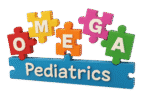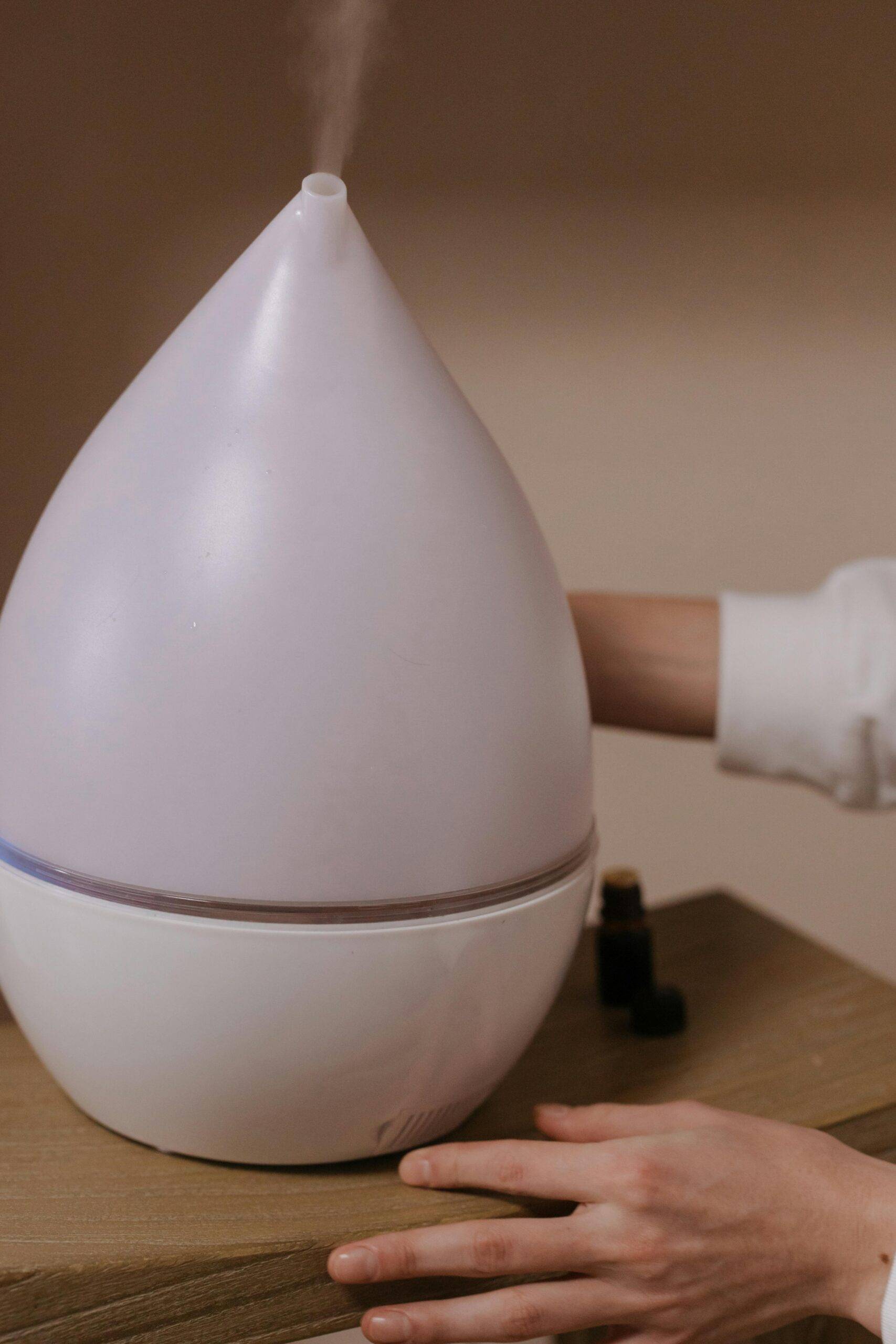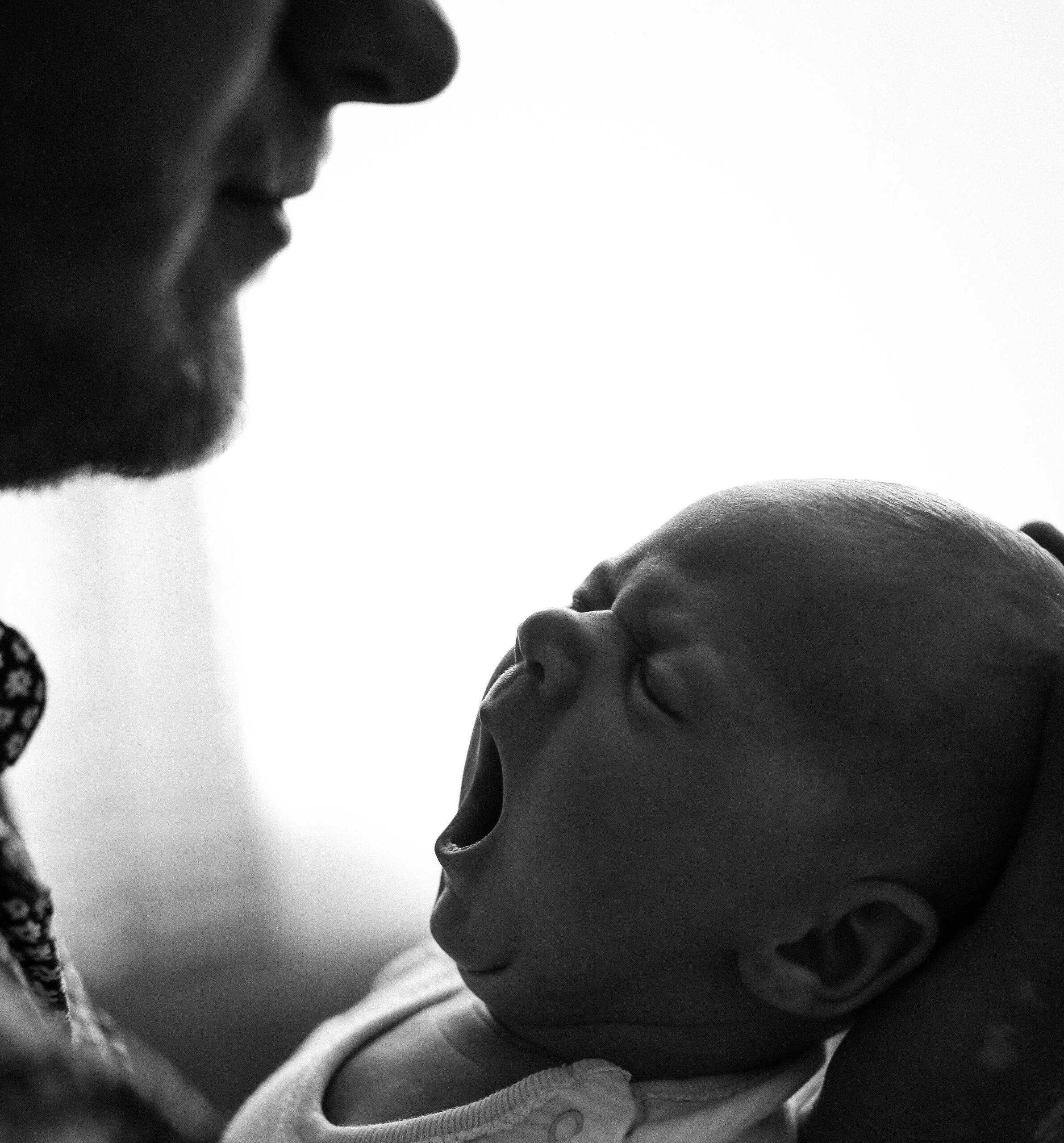Breathing is a vital process for human life, which allows the exchange of oxygen and carbon dioxide in the lungs, providing energy to the body’s cells. In the case of infants, breathing plays an even more critical role, as their bodies are still adapting to life outside the womb. Therefore, it is important for parents to be familiar with their child’s normal breathing patterns and recognize any abnormal ones that may indicate respiratory problems.
Newborns have a breathing pattern similar to mature adults, but they breathe more often in brief “bursts.” This difference is due to the infant’s lung development, which is still ongoing. As their lungs mature, they gradually shift from a pattern of bursts to slower, deeper breaths. Parents can observe these changes as their child grows and develops.
Generally, infants have a different respiratory rate than older children and adults, which can be concerning for new parents who are not familiar with the normal breathing patterns of young children.
A newborn baby’s normal respiratory rate is between 40 and 60 breaths per minute. This rate is much faster than that of older children and adults, as infants require more oxygen to fuel their growing bodies. The respiratory rate of a newborn baby may slow down to 40 or even 30 breaths per minute when they are sleeping, which is normal.

Variations in breathing patterns, especially in the first few months of life, are normal for infants and parents should not be alarmed by it. It is important to bear in mind that infants have a much smaller lung capacity and that their respiratory systems are still developing; thus, their breathing patterns may really differ from those of older children and adults.
Parents should also be watchful for any signs of breathing difficulties in their newborns. Several factors including infections, asthma, and allergies can cause these breathing difficulties. Thus, parents should immediately seek medical attention if they observe that their child displays any signs of breathing difficulties. These signs may be in the form of shallow breathing, grunting, wheezing, or bluish lips or skin.
Breathing Patterns in Children
Periodic breathing
Periodic breathing is another common phenomenon in newborns and premature infants. This pattern involves the baby breathing fast several times while sleeping, followed by a brief rest for less than 10 seconds, then resuming breathing without external stimulation. While periodic breathing can be concerning for parents, it is typically a normal occurrence in infants and not a cause for alarm.
Despite these variations in breathing patterns, parents should also be aware of abnormal breathing patterns in babies. Rapid and irregular breathing, for instance, can be a sign of overheating, agitation, or illness. Newborns breathe rapidly, at more than 60 breaths per minute, especially when crying or feeding. If this breathing pattern persists when the baby is calm and comfortable, it may indicate a serious respiratory problem that requires medical attention.
Apneic breathing

One of the most concerning breathing patterns that parents of infants should be aware of is apneic breathing. Apneic breathing is a type of breathing pause that lasts for more than 20 seconds or less than 20 seconds with other signs of discomfort like low heart rate and bluish skin discoloration. It is a serious respiratory problem.
Apneic breathing can be caused by a variety of factors, including sleep apnea, infections, and neurological conditions. It is important for parents to track their child’s breathing patterns and seek medical attention if they notice any abnormal pauses in breathing.
If a child exhibits apneic breathing, parents should not hesitate to call 911 and begin resuscitation if necessary. Resuscitation techniques may include ventilatory support and oxygen therapy, which can help to restore the child’s breathing and prevent further complications.
Is nasal flaring normal in newborns?
Nasal flaring could also be a sign of respiratory problems in infants. Nasal flaring occurs when the nostrils expand with each breath, indicating that the infant is having trouble taking in enough air. If your baby’s nostrils flare up occasionally, it’s important to keep an eye on them for any signs of distress or discomfort. Babies can sometimes have difficulty regulating their breathing and this can cause their nostrils to flare up. Thus, if you notice your baby’s nostrils flaring while they are sleeping and showing signs of discomfort, seek medical advice right away.
Other signs of respiratory problems in infants
Respiratory problems can be a serious concern for parents, especially when it comes to infants. In addition to nasal flaring, other signs that may indicate respiratory problems in infants include incessant coughing and retracting. While these symptoms may not always be a cause for alarm, they should be checked closely to make sure that the infant’s respiratory health is not compromised.
Incessant coughing or choking, especially during feedings, may indicate a respiratory problem. This coughing or choking can be especially troubling for parents who may worry about their child’s ability to breathe while eating or drinking. Additionally, retracting, which involves the spaces between the ribs being sucked in with each breath, can be a sign of pneumonia or other serious lung infections as well.
To make sure that their infants are breathing regularly, parents can take simple steps to check their breathing patterns. For instance, they can listen, look, and feel for normal breathing patterns. Parents can put their ear close to their child’s nose and mouth and listen for sounds of breath; bend down close to the child’s chest and watch for the rise and fall movement of the chest during breathing, and put their cheek close to the baby’s mouth or nose and feel for tiny breaths against the skin. These measures can help parents identify any irregularities in their infant’s breathing patterns and seek medical attention if necessary.
Overall, parents want their children to be healthy and happy, and when they notice changes in their child’s breathing patterns, it can be very concerning. In many cases, changes in breathing patterns are normal and nothing to worry about. However, in some cases, these changes may indicate respiratory problems that require prompt medical attention.
Dealing with children’s health problems, including respiratory problems, can be a challenging task for parents. It is often difficult to distinguish between normal variations in breathing patterns and those that indicate respiratory problems, and parents may worry unnecessarily about their children’s health. Thus, this is where healthcare providers come in.
Pediatric healthcare providers can provide valuable guidance and support to parents who are concerned about their child’s respiratory health. They can help parents understand the normal breathing patterns of infants and young children and differentiate between those that are normal and those that may indicate respiratory problems. They can also provide prompt medical attention if necessary, including diagnostic testing and treatment options.
Regular check-ups with a pediatrician can help parents stay informed about their child’s respiratory health and identify any potential problems. With open communication and collaboration between parents and healthcare providers, children can receive the prompt medical attention they need to maintain good respiratory health.
How Can I Help My Newborn with a Stuffy Nose?
It’s common for newborns to have stuffy noses, but there are several ways to help your little one breathe easier:
- Keep the Nursery Clean
Ensure that your baby’s sleeping area is free from dust, pet hair, and other allergens. Regularly vacuum and dust the nursery to minimize irritants. - Use Saline Drops
Saline drops can gently loosen mucus in your newborn’s nose. Administer a couple of drops into each nostril to help clear the congestion. - Employ a Nasal Aspirator
If the stuffiness persists, consider using a nasal aspirator. These devices help to remove mucus effectively but should be used with caution. - Run a Humidifier
Adding moisture to the air with a humidifier can keep your baby’s nasal passages from drying out, easing breathing. - Elevate the Head
Slightly elevating your baby’s head during sleep can promote better breathing. Simply placing a rolled towel under the mattress can help achieve this.
Consult Your Pediatrician
Before trying any new remedies, it’s always a good idea to consult with your healthcare provider, especially to ensure the safety and appropriateness of any procedures or products.
What Should I Do If My Baby Sneezes Frequently and Shows Symptoms Like Vomiting or Diarrhea?
If your baby is sneezing frequently and displaying other concerning symptoms such as vomiting, diarrhea, wheezing, or colic, it could indicate an allergy to the formula they are being fed. Here’s a step-by-step guide on what to do:
Steps to Follow
- Monitor Symptoms Closely
- Keep a daily log of your baby’s symptoms, noting any patterns or triggers.
- Record the frequency of sneezing, as well as any instances of vomiting, diarrhea, or wheezing.
- Consult a Health Care Provider
- Schedule an appointment with your pediatrician to discuss these symptoms.
- Share your symptom log with the doctor for a more accurate diagnosis.
- Consider Alternative Formulas
- Upon recommendation from your health care provider, you might need to switch to a hypoallergenic formula.
- Look for formulas that are designed to be gentle on your baby’s digestive system.
- Track Changes
- After switching formulas, continue monitoring your baby’s symptoms.
- Note any improvements or new issues, and report them to your pediatrician.
- Stay Informed
- Educate yourself on common infant allergies and how they can manifest.
- Keep open communication with your health care provider to ensure your baby’s diet is safe and beneficial.
Important Tips
- Avoid Introducing New Foods: While dealing with potential allergies, refrain from adding any new foods to your baby’s diet to avoid further complications.
- Stay Calm: Understand that allergies are common and manageable with the right approach. Your health care provider is your best resource.
By following these steps, you can ensure you’re taking the right actions to address your baby’s health concerns effectively.
Can Frequent Sneezing in Newborns Indicate an Allergy or a Cold?
When parents bring their newborn home and observe frequent sneezing, it’s natural to worry about potential allergies or a cold. However, there are other more common reasons for this behavior.
Nasal Passage Clearance
One primary reason infants sneeze often is due to their need to clear out tiny nasal passages. Since newborns breathe exclusively through their noses, they need to expel any particles that enter. These particles can include dust, lint, or other minor irritants that accumulate in their small nasal passages. Frequent sneezing is an effective way for their bodies to keep these passages clear and is a normal part of early development.
Normal Body Function
Sneezing in newborns is typically a sign that their bodies are functioning correctly. It’s a natural reflex to ensure their airways remain open and free from blockages. This is usually nothing to be concerned about unless other symptoms accompany the sneezing.
Identifying More Serious Concerns
If sneezing is accompanied by symptoms such as vomiting, diarrhea, wheezing, or colic, it could indicate an underlying issue, such as an allergic reaction to something like baby formula. In these cases, it’s vital to consult with a healthcare provider. They may recommend switching to a hypoallergenic formula to see if the symptoms improve.
Key Points to Remember
- Normal Sneezing: Common due to small nasal passages.
- Nasal Clearance: A natural reflex to remove irritants.
- Body Function: Usually not a sign of allergy or cold.
- Accompanied Symptoms: Consult a healthcare provider for possible allergies or other issues.
By understanding these points, parents can feel reassured that frequent sneezing is often just a normal part of a newborn’s early weeks and not necessarily a cause for alarm. However, if there are additional troubling symptoms, seeking medical advice is the best course of action.
Understanding a False “First Cold” in Newborns
Newborns often appear to have a “first cold” quite early, which can cause concern for many parents. However, what seems like a cold is often just a result of their tiny, congested nostrils.
Why It Happens
Newborns have very small nasal passages that are easily blocked by everyday substances such as:
- Lint
- Fuzz
- Spit-up
- Other small particles
While it might seem distressing, these obstructions usually bother you more than your infant. Generally, there’s no immediate need to clear out their noses.
When to Take Action
Most of the time, it’s best to leave your baby’s nose alone unless symptoms appear more severe. However, if you feel the need to help them breathe more easily, consider these steps:
- Keep the Environment Clean: Ensure the nursery is free from dust and pet hair.
- Use Saline Drops: These can help to loosen mucus in the nasal passages.
- Nasal Aspirator: Only use it if necessary and with prior consultation from a healthcare provider.
Recognizing a Real Cold
A genuine cold will usually have additional symptoms beyond a stuffy nose. Be on the lookout for:
- Fever
- Persistent coughing
- Runny nose
- Watery, irritated eyes
- Swollen lymph nodes
If your baby shows any of these symptoms, it is more likely they are experiencing their first real cold, and you may need to take further steps, possibly involving a healthcare professional.
By knowing the difference between a false first cold and a real one, you can avoid unnecessary worry and ensure your baby gets the care they truly need.
Why choose Omega Pediatrics?
Omega Pediatrics, located in Roswell, Georgia, is a pediatric primary care clinic that provides a range of services to support children’s health and well-being. The clinic offers extended hours, walk-ins, and telemedicine via e-visits for known patients, making it easier for parents to access pediatric primary care services. The clinic’s commitment to providing comfortable and convenient services to its patients is further proven by its provision of immunizations after regular business hours.
By offering extended hours and walk-in services, Omega Pediatrics makes it easier for parents to access the care they need, even outside of regular business hours. This extended hours service can be particularly valuable in emergency situations or when parents have concerns about their child’s health outside normal business hours. The clinic’s telemedicine services, which allow parents to consult with a healthcare provider remotely, can also be beneficial in situations where in-person visits are not possible or convenient.
In addition to its convenient services, Omega Pediatrics also provides high-quality pediatric primary care. The clinic’s team of healthcare providers includes pediatricians, nurse practitioners, and medical assistants, all of whom are trained to provide expert care for children. The clinic offers a range of services, including routine check-ups, immunizations, and treatment for common childhood illnesses. The clinic also offers specialized care for children with chronic conditions, such as asthma, allergies, and diabetes.
One area of particular expertise for Omega Pediatrics is respiratory health. The clinic’s healthcare providers are trained to identify and treat a range of respiratory problems in children, including asthma, bronchiolitis, and pneumonia. They are also skilled in providing education and support to parents on how to manage their child’s respiratory health and prevent future problems.
Omega Pediatrics also emphasizes the importance of preventative care, including routine check-ups and immunizations. Regular check-ups can help to identify potential health problems early on, allowing for prompt treatment and prevention of future problems. Immunizations are another important component of preventative care, protecting children from a range of infectious diseases and helping to prevent the spread of disease in the community.


